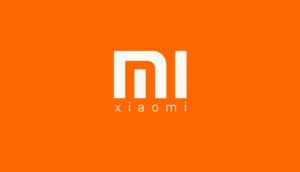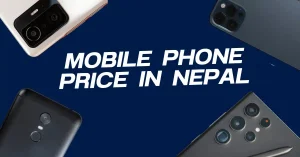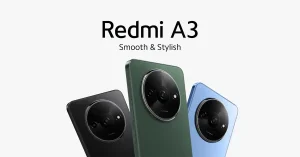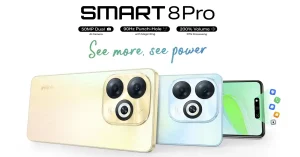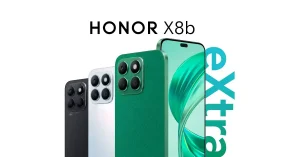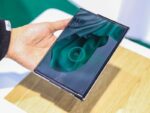
P series from Huawei is very popular and successful in the market. P series phones have constantly evolved and brought many new changes and improvements in the smartphone industry. Huawei P20 Pro was the first phone which started the trend of gradient colorways in the market. The gradient colors became so popular that many other manufacturers follow suit. P30 successor of P20 further improved its performance and brought an awesome phone. It was dubbed, phone with one of the best cameras and photography experience. When rumors and speculations of the P40 started to surface, it was pretty obvious that the phones would be even more awesome. Now the wait is over, Huawei’s next-generation superphones, the P40 series is here.

Huawei on March 26, 2020, unveiled the P40 series over Youtube live stream. After delays due to the COVID-19 pandemic, the company finally unveiled the P40 series. Talking about the series, the P40 series includes three devices this time around — Huawei P40, P40 Pro and P40 Pro+. This year Huawei has introduced a new phone the P40 Pro+ which is the most stacked phone of the bunch. There are many similarities between the devices like Snapdragon 865 processor and storage options. So let’s dive into the nitty-gritty the phone.
Design and Display
Starting with the design, like its predecessor, vanilla P40 and P40 Pro has glass in the front and back with an aluminum frame sandwiched in the middle. P40 Pro+, on the other hand, is made from more premium material – Ceramic. Both the body and frame of the P40+ model, are made up of ceramic giving it a more premium feel. As the device is made from ceramic, it is heavier than the P40 and the P40 Pro.
For display, all three models of the P40, use a flexible OLED screen. The screen is made by BOE which is one of the very few OLED manufacturers in the whole world. Huawei decided to go with BOE panels to reduce the dependency on Samsung, which is among the biggest supplier of the OLED panel.
P40 which is the smallest of the series and sports a normal 6.1-inch panel. P40 Pro and P40 Pro+ on the other hand feature a 6.58-inch wraparound display. The wraparound display which the company calls “quad-curve overflow display” has curves on all sides of the panel. It’s difficult to put in words how the display looks but imagine looking at a glass full of water from the side. This wraparound display looks similar to that overfilled glass water. The company claims this display makes swiping more seamless. The display also sports an in-display fingerprint scanner and punch-hole cutout for selfie cameras. Screens in all three variants have a refresh rate of 90hz and support DCI-P3 and HDR10+.

P40 series is all about cameras
Talking about cameras P40, P40 Pro and P40 Pro+ have triple, quad and Penta-camera setup respectively. And for selfies, P40 has a single sensor whereas P40 Pro and P40 Pro+ sports dual selfie sensors. It could be very confusing if we include all the sensors of all three variants in one sentence.
So to keep it simple, let’s start with the Vanilla P40. It sports a triple camera setup, the primary sensor being a 50MP Ultra vision wide sensor. This primary sensor is common for all the variants of the series. Accompanying the primary sensors is a 16MP Ultrawide sensor and an 8MP telephoto snapper. The telephoto snapper of the phone is capable of 3x zoom and is optically optimized. For selfies the phone sports a 32MP sensor housed within the punch-hole cutout.

P40 Pro flaunts a quad-camera setup with the same 50MP ultra vision wide sensor as a primary camera. The accompanying sensors of the phone include a 40MP ultrawide sensor, 12MP 5x optical telephoto snapper, and a 3D ToF sensor.
And as for P40 Pro+, there are five sensors in total making it a Penta camera setup. 50MP ultra vision wide sensor returns as the primary camera accompanied by 40MP ultrawide, 8MP 3x telephoto, 8MP 10x telephoto, and a 3D ToF sensor. The dual telephoto sensor allows for a 20x hybrid zoom and 100x maximum zoom. As for selfies both the P40 Pro and P40 Pro+ flaunts a dual selfie camera setup, 32MP and a depth sensor placed in the punch-hole cutout.
Performance, Software, and Battery
Powering all three variants of the P40 series is the company’s latest in-house chipset, the Kirin 990 SoC. All three phones have 8GB of RAM builtin. And as for internal storage, the P40 comes with only 128GB whereas P40 Pro and P40 Pro+ are available with 128GB as well as 256GB of internal storage. The storage used in the series is of UFS 3.0 kind.
All the three variants run on Android 10 with EMUI 10.1 on top. To keeps the lights running, P40 has a 3,800mAh battery whereas P40 Pro and P40 Pro+ have 4,200 mAh cell. The P40 supports 22.5W fast charging whereas both the Pro variants support 40W fast charging via USB Type-C. No return of 3.5mm audio jack this time as well. Another thing that is not returning is Google Apps. Huawei instead of Google Mobile Service(GMS) has baked its own HMS( Huawei Mobile Service) in all three variants. Additional features of the phones include infrared face recognition, fingerprint (under display, optical), accelerometer, gyro, proximity, compass, and color spectrum.

Huawei P40 Series Specifications
| Release Date | March 26, 2020 |
| Display |
|
| Chipset | Kirin 990 5G |
| Memory | 8GB RAM, 128/256GB internal Storage, UFS 3.0 |
| Primary Camera |
|
| Selfie Camera |
|
| OS | Android 10 with EMUI 10.1 |
| Battery |
|
| Colors | Black, Deep Blue Sea, Ice White, Silver Frost, Blush Gold |
| Miscellaneous | Infrared face recognition, fingerprint (under display, optical), accelerometer, gyro, proximity, compass, and color spectrum. |
| Huawei P40 Series Price in Nepal [Expected] |
|
Huawei P40, P40 Pro and P40 Pro+ Price in Nepal
Finally coming to pricing, the P40 is the cheapest among the three phones launched. The P40 comes at the price of €799 while the P40 will cost you €999. Converting that to Nepali rupees, it hints the Huawei P40 and Huawei P40 Pro price in Nepal could be around NPR 1,05,300 and NPR 1,31,600 respectively.
Both the P40 and P40 Pro will go on sale in Europe from April 7, 2020. As for P40 Pro+, it is priced at €1,399, the Huawei P40 Pro Plus could be available for NPR 1,84,400 price in Nepal. The P40 Pro+ will be available from June of this year in selected markets.
Also Read:
- Ncell and Nepal Telecom are giving users bonus offers and more services for COVID-19 Nepal lockdown
- Lenovo Legion gaming phone renders leaked, Dual USB Type-C on board
- IBM assembles Supercomputers to fight against Coronavirus
- COMPUTEX TAIPEI 2020 is rescheduled for September due to Coronavirus concern
- YouTube will lower video streaming quality due to Coronavirus outbreak
- Coronavirus Total Cases and News Update in Nepal
- World Health Organization cyberattacked amidst COVID-19 pandemic
- Samsung’s free Galaxy Sanitizing Service disinfects phones and kills coronavirus
- Ford, GM, and Tesla given a green light for COVID-19’s ventilator production
- Amid COVID-19 pandemic, Scribd is giving unlimited access to read your favorite books for free
